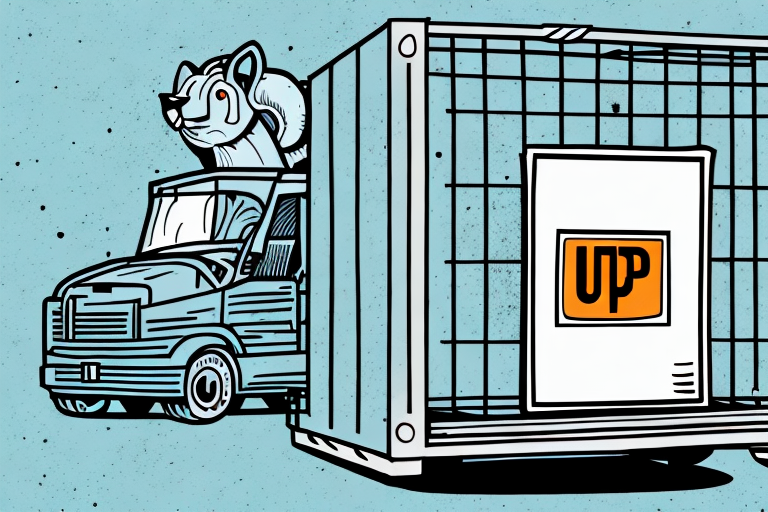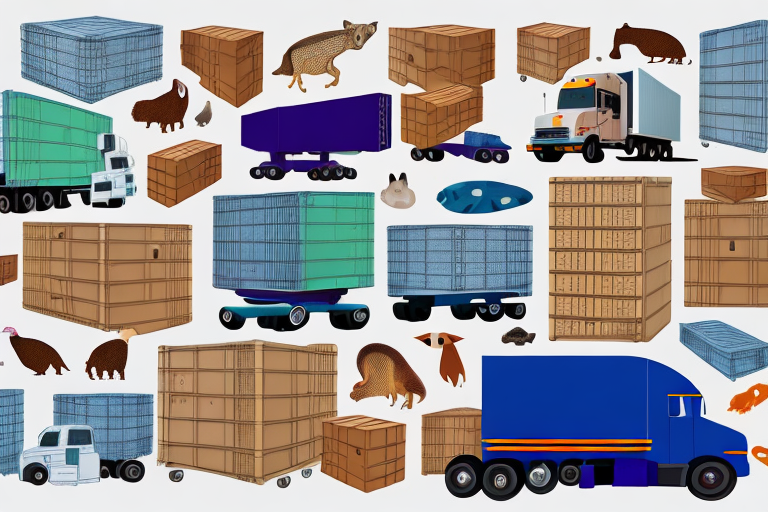The Importance of Understanding UPS Animal Shipping Rates
Shipping animals requires careful planning and consideration to ensure their safety and well-being during transit. One of the critical factors in this process is understanding the UPS animal shipping rates. By comprehending these rates, you can effectively budget for transportation costs, select appropriate shipping methods, and ensure the secure delivery of your pets or livestock.
Overview of UPS Animal Shipping Rates
UPS offers specialized services for shipping live animals, with rates that vary based on several key factors:
- Weight and Size: Heavier and larger animals generally incur higher shipping costs.
- Destination: The distance between the origin and destination affects the overall rate.
- Service Level: Options like expedited shipping or temperature-controlled environments can increase costs.
- Type of Animal: Different animals may require specialized handling and packaging, influencing the rate.
For the most accurate pricing, you can use the UPS Rate Calculator tailored for animal shipments.
Calculating UPS Animal Shipping Rates
Calculating the cost of shipping animals with UPS involves several steps:
- Determine the Weight and Dimensions: Accurately measure your animal’s shipping container.
- Select the Service Level: Choose between ground, air, or specialized services based on your needs.
- Input Destination Details: Enter the pickup and delivery locations to assess distance-related costs.
- Account for Additional Services: Include any necessary temperature control or expedited handling.
Ensure you adhere to UPS’s live animal shipping guidelines to avoid unexpected fees and ensure a smooth shipping process.
Factors Influencing UPS Animal Shipping Costs
Weight and Size of the Animal
The heavier and larger the animal, the more space it occupies, which can significantly increase shipping rates.
Destination and Distance
Longer distances typically result in higher shipping costs. International shipments may also involve customs fees and additional regulations.
Service Level and Speed
Expedited shipping options or services that require temperature control are generally more expensive due to the specialized handling involved.
Type of Animal
Different animals have varying shipping requirements. For example, reptiles may need temperature-controlled packaging, while larger livestock like horses require specialized crates and handling.
Seasonal Demand
Shipping rates can fluctuate based on seasonal demand. High-demand periods, such as holidays or breeding seasons, may see increased rates.
Types of Animals and Specific Shipping Requirements
Household Pets
Commonly shipped pets include dogs, cats, birds, and small mammals. Each requires a comfortable and secure shipping container, with special considerations for ventilation and safety.
Exotic Animals
Shipping reptiles, amphibians, and other exotic pets often necessitates temperature-controlled environments and compliance with specific regulations.
Livestock
Transporting livestock like horses, cattle, and pigs involves larger containers, specialized handling, and adherence to agricultural transport standards.
Companion Animals
Animals such as rabbits, guinea pigs, and ferrets require secure and appropriately sized containers to ensure their comfort and safety during transit.
Tips for Reducing UPS Animal Shipping Expenses
Efficient Packaging
Use the appropriate size shipping container to avoid unnecessary weight and size charges. Ensure the container meets UPS guidelines to prevent additional fees.
Plan Ahead
Shipping during off-peak times can result in lower rates. Avoid last-minute bookings to take advantage of better pricing.
Consolidate Shipments
If shipping multiple animals, consolidating them into a single shipment can reduce overall costs.
Choose Ground Shipping
Opting for ground shipping instead of air can be more cost-effective, especially for shorter distances.
Accurate Weight and Dimensions
Ensure all measurements are precise to avoid additional charges due to overweight or oversized packages.
Comparing UPS Animal Shipping with Other Carriers
When evaluating UPS animal shipping rates, it’s essential to compare them with other reliable carriers such as FedEx, DHL, and specialized pet transport services. Factors to consider include:
- Cost: Compare base rates and any additional fees for specialized services.
- Services Offered: Look for carriers that provide temperature control, expedited shipping, and specialized handling.
- Reputation: Choose carriers with strong reviews and a history of safely transporting animals.
- Coverage Area: Ensure the carrier services both your pickup location and destination.
By conducting a thorough comparison, you can select the most cost-effective and reliable option for your animal shipping needs.
Understanding the Packaging Requirements for Animals
Proper packaging is crucial for the safe transportation of animals. UPS has specific guidelines to ensure the well-being of your pets or livestock during transit:
- Secure Containers: Use sturdy, escape-proof crates that are appropriately sized for the animal.
- Ventilation: Ensure adequate airflow to maintain a comfortable environment inside the container.
- Labeling: Clearly label the container with handling instructions and indicate that it contains a live animal.
- Temperature Control: For animals sensitive to temperature changes, use insulated containers and consider UPS’s temperature-controlled shipping options.
- Comfort Items: Include bedding or toys to help reduce stress for the animal during transit.
Refer to UPS’s live animal shipping guidelines for detailed packaging requirements and recommendations.
The Role of Temperature Control in UPS Animal Shipping
Maintaining appropriate temperatures is vital for the health of certain animals during shipping. UPS offers temperature-controlled shipping options for animals that are sensitive to heat or cold, such as reptiles and amphibians.
Implementing temperature control measures involves:
- Insulated Packaging: Use materials that help maintain a stable temperature inside the shipping container.
- Temperature Indicators: Include devices that monitor the temperature throughout the shipment.
- Scheduled Shipping: Plan shipments during mild weather conditions to avoid extreme temperatures.
Failure to maintain proper temperatures can lead to stress, dehydration, or even fatality for the animal. Always consult with UPS and follow their guidelines when shipping temperature-sensitive animals.
Common Mistakes to Avoid When Shipping Animals with UPS
Shipping animals with UPS requires adherence to specific protocols to ensure a safe and smooth delivery. Common mistakes include:
- Inadequate Packaging: Using unsuitable containers can lead to escape or injury.
- Mistimed Shipments: Shipping during extreme weather conditions can jeopardize animal safety.
- Incorrect Labeling: Improper labels can result in mishandling or delays.
- Insufficient Documentation: Missing permits or health certificates can cause legal issues and shipment refusals.
- Neglecting Comfort: Failure to provide adequate bedding, food, or water can stress the animal during transit.
Avoid these mistakes by thoroughly reviewing UPS’s live animal shipping guidelines, double-checking all requirements, and preparing your shipment with the animal’s well-being as the top priority.
Conclusion
Understanding UPS animal shipping rates and the associated factors is essential for ensuring the safe and cost-effective transportation of your animals. By familiarizing yourself with UPS’s guidelines, accurately calculating shipping costs, and avoiding common mistakes, you can facilitate a smooth shipping experience. Always prioritize the health and safety of your animals by adhering to best practices and consulting with UPS for any specific shipping needs.






















